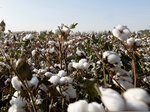


The operating practice of trade compliance is bifurcated into customer due diligence (CDD) and managing import and export controls. CDD involves vetting customers and suppliers using various sanctions lists to prevent illicit transactions.
Import and export controls require cautious management across the global supply chain, especially for high-risk jurisdictions and specific products like dual-use goods. A more recent development has been the elevation of forced labor “from a mere bullet point in supplier codes of conduct to a top-tier concern,” as one regulator has put it.
The increased attention to these issues from company boards, C-Suites, and international governments suggest a positive trend towards cleaner, more ethical supply chains.
U.S. customs law has prohibited importing goods produced by certain categories of labor since the end of the nineteenth century. Beginning in 1890, the United States prohibited imports of goods manufactured with convict labor. In 1930, Congress expanded this prohibition in Section 307 of the Tariff Act to include any (not just manufactured) products of forced labor. Although a few Members brought up humanitarian concerns during debate, the central legislative concern was protecting domestic producers from competing with products made with forced labor
United States and China negotiated agreements relating to goods made with prison labor, notably a 1992 Memorandum of Understanding and 1994 Statement of Cooperation. However, China’s compliance has been inconsistent, and U.S. concerns over prison and forced labor broadly, remain.
Since 2016, China has again become a target of WROs, with several issued over the systemic forced labor of ethnic Uyghurs and other Turkic Muslims in Xinjiang. Xinjiang raw materials and products are used in finished goods in China and neighboring countries, putting supply chains at risk of exposure to forced labor. In January 2021, CBP issued a region-wide WRO on imports of all cotton and tomato products from Xinjiang.
The 117th Congress passed, and the President signed, The Uyghur Forced labor Protection Act in 2021. The law creates a rebuttable presumption that goods produced or manufactured in Xinjiang or by certain entities with ties to the region are made with forced labor, unless CBP determines otherwise.
For the first time in a U.S. Free Trade Agreement, the U.S.-Mexico-Canada Agreement (USMCA) ratified in 2018 commits parties to prohibit imports produced by forced labor and to cooperate over identifying such goods. USMCA implementing legislation (P.L. 116-113) created the Forced labor Enforcement Task Force (FLETF) to monitor and report on enforcement of Section 307.
Another player in forced labor enforcement has been the International labor Organization (ILO). Created in 1919 (the only League of Nations institution to survive World War II), it is the only international organization not purely intergovernmental. Unions and employer group representatives are part of each country’s delegation and have the same right to vote as government representatives at Governing Body meetings and plenary sessions.
One of the notable accomplishments mentioned is the roll-out of the UFLPA dashboard back in early 2023. Designed to provide the importing community with critical insights into the direction of enforcement, it has been well received. By categorizing data by product and country of origin, the dashboard helps the trade community predict and prepare for enforcement actions to ensure compliance.
Interestingly, the top two countries flagged for enforcement actions were Vietnam and Malaysia, with China coming in third. This trend, under a law specifically targeting one Chinese province, underscores the complexity and dispersion of global supply chains. Among garment exporters, Vietnam has faced the worst hit from the the Uyghur Forced Labor Protection Act (UFLPA), a Reuters review of official U.S. data showed.
Component parts or raw materials originating from Xinjiang may end up being assembled in other countries, making them still subject to enforcement.
Recently the FLETF announced the addition of two entities to the UFLPA Entity List – companies known to engage in forced labor practices or the forced transfer of Uyghurs or other persecuted minorities out of Xinjiang. Several other companies are currently under scrutiny and could be added to the list, signaling ongoing commitment to the issue.
When asked about the potential for UFLPA policy expansion beyond Xinjiang, task force officials note that in some ways, this expansion is already occurring. The recent addition of Nine Star, a company based in Zhuhai, China, and its eight subsidiaries to the Entity List, exemplifies this trend. The entities listed are not limited to Xinjiang province, mirroring the complex and distributed nature of global supply chains.
Moving forward, the FLETF will work closely with the corporate community to raise awareness around forced labor as a top-tier compliance issue.
Corporate compliance programs have traditionally focused on areas such as anti-corruption, sanctions compliance, export controls, anti-money laundering laws, and privacy laws. However, forced labor is now a key concern, not only due to the UFLPA but also because many countries are implementing similar laws demanding supply chain visibility, due diligence, and accountability.
In light of the UFLPA, compliance programs should prioritize thorough due diligence, with particular attention to supply chains linked to the XUAR. Proactive measures such as third-party audits, worker interviews, and on-site inspections can enhance transparency and detect potential UFLPA violations
As the FLETF heads into its second year of enforcing the UFLPA, it continues to underscore the importance of partnerships, visibility, and accountability in eliminating forced labor. The lessons learned in the first year and the ongoing cooperation with industry and legislative bodies set a promising path towards a fairer, more sustainable global trade environment.
“In our view, the overwhelming majority of companies in the US ant to be in compliance with these laws,” said one senior enforcement official recently. “They would be aghast to learn that they were inadvertently supporting these abhorrent practices. So I think that's a good thing. There are bad actors out there for sure, but the overwhelming majority of our industry here wants to do the right thing.”
“There are developments in software and data aggregation that can be incredibly helpful. There's promising advances in DNA testing and the use of isotopes to identify products that may have come from Xinjiang, province, for example..
“It all starts with supply chain mapping. You just need to know where your inputs are coming from and where your first tier suppliers are getting their inputs. If you don't have that fundamental data, map that fundamental visibility. Then you're blind. You're shooting in the dark. So in my mind, that that's the basics.
"I think that bringing supply chain integrity to boards is definitely a trend we're seeing. And I think again, it kind of dovetails with how boards are more interested in supply chain resilience anyway. So these things don't need to be siloed.
"How do we begin to explain to the CEO, the C-Suite, the boards, why we need additional money funding to implement a number of these types of activities? Well, the first is just from a values perspective. Corporate values are national values. Nobody wants to be wearing something made by enslaved people.
On March 14, 2023, U.S. Customs and Border Protection (CBP) launched an interactive web page providing forced labor enforcement statistics under the Uyghur Forced Labor Prevention Act (UFLPA). CBP launched this “UFLPA statistics dashboard” to provide a single source of data on UFLPA enforcement actions.
The dashboard provides information on the number of total shipments, shipments denied access, shipments released by CBP, and also allows users to select specific views for greater details of shipments by industry and by country of origin. The dashboard includes only data related to enforcement of the UFLPA and not other forced labor enforcement by CBP, such as withhold release orders (WROs) or findings.
The start date of the data in this dashboard is June 21, 2022, the date on which CBP began UFLPA implementation.
As ofJune 30, 2023, the dashboard indicates that 4,269 shipments, valued at $1.4 billion, were subject by CBP to UFLPA reviews or enforcement actions. CBP denied (i.e., seized, excluded, exported or destroyed) a total of 679 shipments and released 1,603 shipments into the United States.
The remaining shipments are pending a determination. To date, the bulk of shipments being examined fall into the electronics industry sector, followed by the apparel, footwear and textiles industry sector. Malaysia, Vietnam and China are the top three countries of origin, by shipment value, for shipments subject to UFLPA enforcement actions.
Comments
No comments on this item Please log in to comment by clicking here